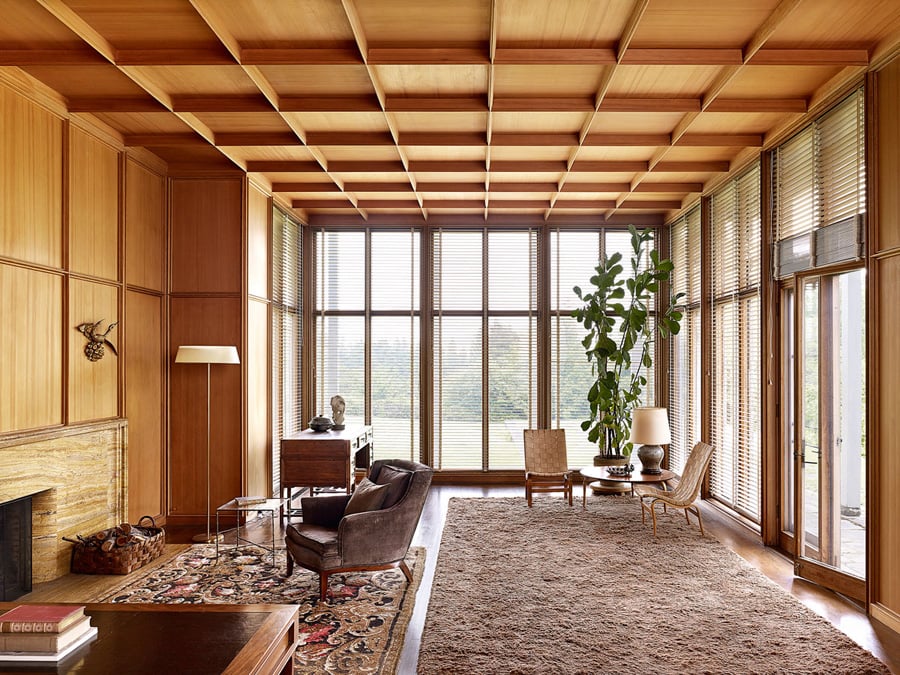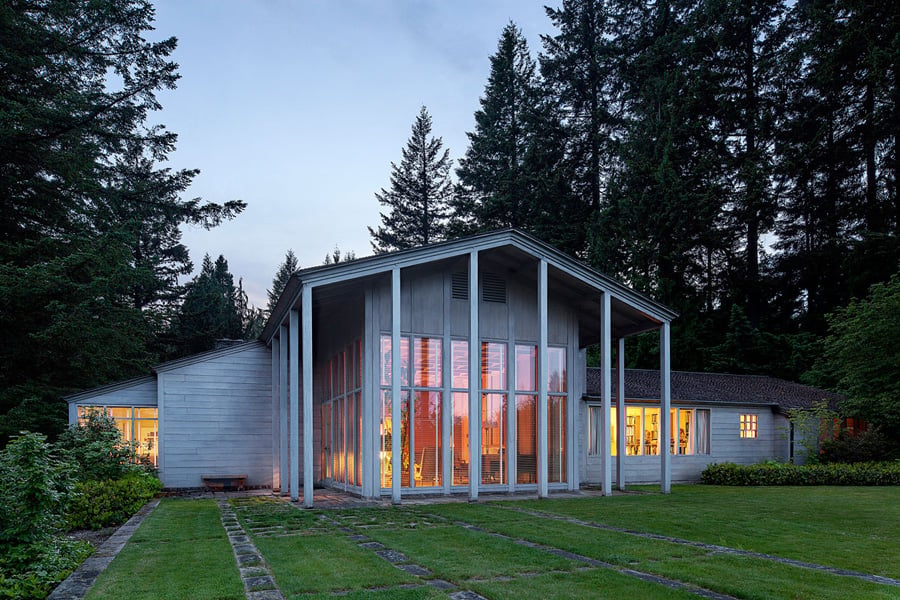
March 28, 2018
Pacific Northwest Design: How Abundant Natural Beauty And Rich Cultural Exchange Shaped a Region
An ambitious culture of craft and design lies amid the region’s internationally successful creators of computer code and yoga pants.

For its March 2018 issue, Metropolis Magazine explored the three great North American design regions: The Pacific Northwest, North Carolina, and Minnesota. We looked at each area’s deep historic connections to architecture and design, as well as the contemporary practices thriving there today. Stay tuned to our homepage as March issue articles such as this one go online; you can also find the latest updates here.
Viewed from afar, the corridor of development between Vancouver and Seattle has a distinctive geography, vegetation, and orientation to the sea. And with its West Coast economy centered on technology, entertainment, and leisure, it forms a central node in the Pacific Rim trading apparatus. But amid the internationally successful creators of code and yoga pants also lies an ambitious culture of craft and design.
If a local culture is formed largely by its direct and historical influences, the Pacific Northwest benefits from a long-standing regard for Asian design—particularly that of Japan and South Korea. The similarities in climate and widespread deployment of wood structures are evident in early Modern house design on both sides of the U.S.-Canada border.
Wood design has regained momentum as environmental agendas increasingly inform building practices. The push to allow tall timber structures (and, in turn, reshape building codes) shows one facet of this impulse, while a plethora of young designers working with recycled old-growth wood offers another. Especially at the architectural scale, research is well under way to integrate emerging technologies with new forms of manufactured timber, though it is not yet pervasive in practice. The use of wood in substantial structural elements has, meanwhile, become commonplace as an expressive tactic.
Another aspect of the region that illustrates a convergence of environmental and ethical practices is the influence of an indigenous voice in recent design discussions. As in many parts of the U.S. and Canada, the region’s indigenous culture is very much alive and present in everyday life. The University of British Columbia’s Indian Residential School History and Dialogue Centre, designed by architect Alfred Waugh, provides a structure that is entirely forward-looking while honoring native traditions of siting and material palette. The Canadian representation at this year’s Venice Architecture Biennale, titled Unceded: Voices of the Land, will display contemporary projects by indigenous architects from both sides of the border. Given the frequent criticism that the profession is slow to accommodate social change, it will be interesting to observe this growing First Nations participation in local design culture.

Another defining quality of the region is an aptitude for problem solving and integrating new technologies. One demonstration of this in Vancouver has been the evolution of Emily Carr University of Art and Design from a small, traditional fine-arts school into a global institution that seeks to combine modes of learning and production. A new building, just completed on formerly industrial land on the eastern periphery of the city, aims to be a catalyst for redevelopment of the area. Commercial galleries are already recognizing opportunities in underutilized industrial buildings and potential synergies with the new facility.
This points to what is perhaps the greatest single challenge to the region’s emerging design practice: the unquestionably steep rise in property values. Surveys consistently rank Vancouver and Seattle among the most rent-burdened cities worldwide, indicating an alarming dearth of available, affordable spaces. This trend is exacerbated by the disparities in income between tech and design workers.

While Seattle benefits from a larger stock of robust industrial structures, both cities struggle to balance smaller-scale creative production with corporate interests. Although modest-scaled restaurants and shops continue to find venues in the two municipalities, larger spaces for collaboration and production are rare. Affordable spaces for start-ups and scaled-up production will be essential to sustain the region’s thriving design culture. These physical constraints notwithstanding, a successful shift to larger, internationally targeted markets can be seen in the work of practices throughout the region. These practices suggest a transition from artisan labor to more sophisticated production technology.
What is perhaps the strongest asset of the Vancouver-Seattle corridor is an impressively diverse and skilled population, comparable to that of any other metropolitan area on the continent. Conflicting U.S. and Canadian immigration policies may erode some of the traditional, globally oriented social fabric, yet the extraordinary supply of ambitious, capable, and creative designers is the true resource on which the success of the region’s design culture was founded.
Chris Macdonald is a professor at the University of British Columbia’s School of Architecture and Landscape Architecture. He is a coeditor of and a contributor to the series of monographs West Coast Modern House.
You might also like, “Minnesota Design: See All Our Coverage Here.”
Recent Viewpoints
Viewpoints
Navigating the Path to Net Zero












